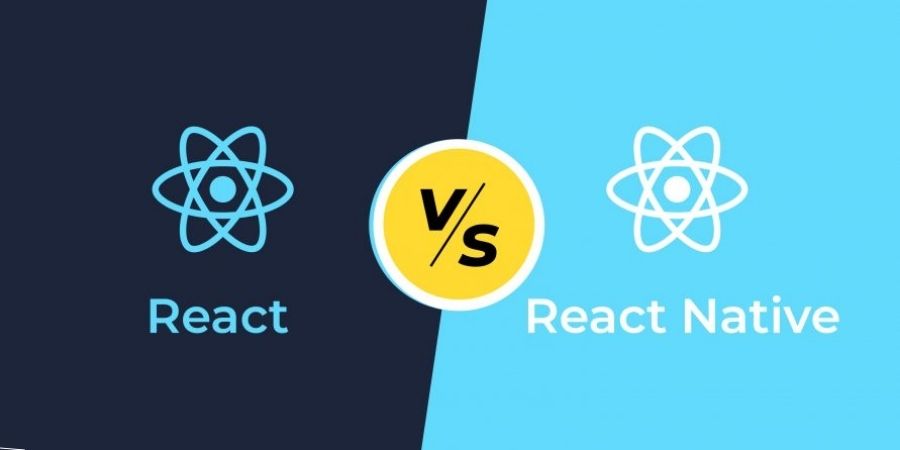React and React Native are household names in modern development. They have revolutionized how developers build web and mobile applications.
React is one of the most used JavaScript libraries for developing dynamic and responsive web interfaces. React Native extends the power of React to mobile development, allowing a single codebase to create native-like apps on iOS and Android.
In this article, we will dive into the core differences between React and React Native, unpack their unique features, and explore their respective advantages.
We will see how React Native Development Services made mobile application development simple and easy for businesses while still focusing on producing ultimate user experiences. The coverage will include the following.
- How React and React Native vary in functionality and major uses.
- A look at the standout features of each platform.
- Why developers and businesses choose one over the other.
- Tips to help you decide which tool aligns best with your project goals.
Continue reading as we learn more about it in the following sections.
What is React?
React is a JavaScript library that creates fast, interactive, and dynamic user interfaces primarily for web applications. Facebook, known as Meta, developed this in 2013 and simplified building complicated UIs by splitting them into reusable parts.
Key Features
- Component-Based Architecture: Allows developers to build and reuse encapsulated UI pieces across projects.
- Virtual DOM: React updates only the parts of the user interface that change, leading to better performance.
- Declarative Syntax: This makes describing how the UI should look at any given time easier.
Popular Applications Built with React
- Facebook: The platform where React was first implemented.
- Instagram: Seamless transitions and dynamic features powered by React.
- Netflix: Enhanced user experiences in their web-based interfaces.
What is React Native?
React Native is an open-source framework from Meta. It’s designed for mobile application development and utilizes JavaScript and React. Therefore, the app can be developed using the same code base on iOS and Android platforms, combining the power of web development with native applications.
Key Features
- You can write code once and deploy it across both iOS and Android platforms with React Native.
- The framework uses native components, ensuring the app feels and performs like a native application.
- This approach saves time and reduces development costs while maintaining high quality.
Examples of Popular Apps Built with React Native
- Instagram – Enhanced its UI with React Native components.
- Airbnb – Adopted React Native for cross-platform consistency.
- Walmart – Boosted its app’s speed and performance using React Native.
Key Differences Between React and React Native
Though mighty in the development world, React and React Native differ. Below is the key difference between them, which will help you understand how they can best fit into the development ecosystem.
1. Purpose and Platforms
- React: Designed for building web applications. It focuses on providing elements in the browser using HTML and CSS.
- React Native: It allows you to create cross-platform apps for iOS and Android as it is specifically built for mobile app development. Instead of HTML, it uses native components like View and Text.
2. Rendering and Performance
- React relies on the browser’s DOM manipulation to update web pages dynamically.
- React Native bridges JavaScript with native code, delivering a more seamless mobile experience by directly interfacing with platform-specific APIs.
3. Tools and Libraries
- React has an extensive ecosystem for web development, with popular libraries like Redux for state management and Next.js for server-side rendering.
- React Native offers tools tailored for mobile development, such as Expo for rapid prototyping and NativeBase for UI components.
4. React 19 Upgrade
Updates like the React 19 Upgrade improve performance and developer experience in React and React Native. However, applying these updates differs slightly due to React Native’s platform-specific nature.
Features of React and React Native
React:
- Declarative UI
React simplifies building user interfaces by using a declarative approach. Instead of detailing every step, developers describe the final look and feel, and React handles the updates efficiently. - Component-Based Architecture
Applications built with React use reusable components, which organize code into smaller pieces and help manage them.
3. Virtual DOM for Speed
React uses a Virtual DOM to compare changes before applying them to the actual DOM. This ensures smooth performance by reducing unnecessary updates and rendering only what’s needed.
React Native:
- Hot Reloading
React Native offers Hot Reloading, where the developers see real-time app changes while editing the code. - Native-Like Performance
By leveraging native components for iOS and Android, React Native delivers near-native performance. This makes it a great choice for building mobile apps that feel fast and responsive. - Modular Architecture
React Native encourages breaking the application into reusable modules. This not only speeds up development but also facilitates collaboration across teams.
Advantages of React and React Native
React
React is a game-changer when it comes to building modern web applications. Here’s why:
- Flexibility and Performance:
React is ideal for constructing dynamic SPAs, where its virtual DOM assures blazing-fast updates and creates an exceptionally smooth user experience. - Reusable Components:
This would allow developers to build modular components that can be reused across different projects. It would save a lot of time and make the code more maintainable.
React Native
React Native extends React’s capabilities to the mobile world, allowing developers to create impressive mobile apps. Key benefits include:
- Cross-Platform Development:
React Native enables users to create code once and publish it across iOS and Android, drastically reducing development time and expense. - High Performance:
Mobile apps built with React Native deliver near-native performance, ensuring smooth user interactions.



